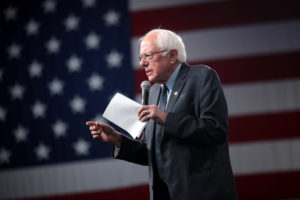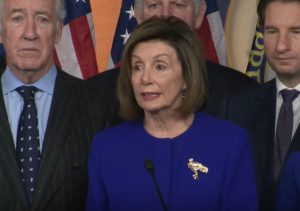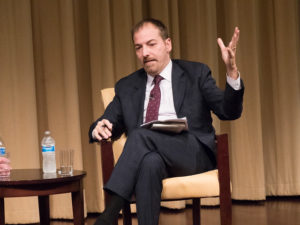Overtime Issue Will Be Early Test of Trump’s Pledge to Help Workers
A rule that could secure overtime pay for 4 million workers is in limbo, and the president-elect will help decide whether it survives. Lena Vasiljeva / CC BY-NC 2.0
Lena Vasiljeva / CC BY-NC 2.0
By Justin Elliott / ProPublica
Donald Trump ran for president as the billionaire who would champion working people.
As the president-elect put it in one of the major economic speeches of his campaign: “Too many of our leaders have forgotten that it’s their duty to protect the jobs, wages and well-being of American workers before any other consideration.”
One of the first tests of Trump’s pledge to help workers will come in how his administration handles the complicated rules that govern who has the right to time-and-a-half overtime pay.
Business groups and Republican state attorneys general sued to stop an Obama administration rule that would expand who gets overtime pay. A federal court temporarily blocked the rule in November. Now the Trump administration will decide whether to continue defending the rule in court.
At stake is the possibility of overtime pay for about 4 million workers around the country.
To get a sense of how big a deal that is: The still-sketchy deal to save factory jobs at a Carrier plant in Indiana — the subject of numerous Trump tweets and extensive media coverage — affected 1,000 or fewer workers.
Here’s how overtime works now
Most employees in the country have the legal right to time-and-a-half overtime pay if they work more than 40 hours in a week.
But there’s a major exception to that: white-collar workers. So who qualifies as a white-collar worker?
The government has a test for that. To be considered a white-collar worker who does not qualify for overtime pay:
- You have to be paid a salary and not by the hour.
- You have to make more than $455 per week — the equivalent of $23,660 per year.
- And you have to work in certain types of jobs, including executive, administrative or professional positions. That has nothing to do with your title, but rather is defined by the nature of your job. For example, executive employees have to, among other things, supervise other workers.
Here are more details on how it all works.
Labor advocates say some employers have been playing games with who is considered a white-collar worker.
There have been a series of lawsuits and settlements outlining how, for example, the dollar store industry classifies employees as managers to avoid paying overtime. Some workers classified as managers spent much of their time doing the same manual labor as their subordinates.
Halliburton in 2015 agreed to pay $18 million in back wages for overtime to about 1,000 employees who worked as pipe recovery specialists and drilling advisers, among other jobs. The company acknowledged it had improperly classified those workers as exempt from the overtime rules. Walmart paid a $4.8 million settlement in 2012 for not paying security guards and other employees overtime they were due.
The Obama administration argues that the current overtime salary threshold, which was last raised in 2004 and has been eroded by inflation, is outdated.
According to the Department of Labor, in 1975, 62 percent of full-time salaried workers were eligible for overtime based on their pay. That compares to just 7 percent today.
The Obama rule would make another 4 million people eligible for overtime
The most important change made by the Obama administration was raising the salary threshold below which you generally have the right to overtime pay, regardless of your job duties.
The new level — which is currently on hold because of the pending lawsuit — is $913 per week, or $47,476 per year. That’s double the old standard of $23,660 per year.
The Department of Labor has calculated that the new rule could benefit 4.2 million workers around the country.
The affected workers would either start getting overtime for any time worked over 40 hours a week, or their salaries would have to be increased above the new threshold.
Business groups opposing the rule, most prominently the U.S. Chamber of Commerce, argued that “the salary threshold is going to result in significant new labor costs and cause many disruptions in how work gets done” including by reducing “workplace flexibility, remote electronic access to work, and opportunities for career advancement.”
Some employers, acting on the expectation that the rule would go into effect, have already raised salaries. The biggest name on the list is Walmart, which bumped starting pay for some managers from $45,000 to $48,500 in order to exempt them from overtime pay.
Politico reported that other employers that had promised pay increases, including several universities, have now cancelled the raises in light of the uncertainty around whether the rule will actually go in effect.
(Have you heard anything from your employer about overtime changes? Tell us about it.)
Trump’s pick for labor secretary has attacked the idea of expanding overtime, and the president-elect himself seems skeptical
When Trump was asked about the rule in August, he spoke of “a delay or a carve-out of sorts for our small business owners.” It’s not clear from his comments that Trump actually knew the details of the pending Obama changes.
The Trump transition team didn’t response to a request for comment. The Department of Justice also declined to comment about what could happen in the lawsuit after Jan. 20.
Andrew Puzder, Trump’s pick to be secretary of labor and the CEO of a fast-food company, has spoken out strongly against the overtime rule.
In a 2014 Wall Street Journal op-ed, Puzder warned against “rewarding time spent rather than time well spent.”
“What they lose in overtime pay they gain in the stature and sense of accomplishment that comes from being a salaried manager,” Puzder said of workers trying to climb the management ladder.
The fate of the rule depends on how things play out in a lawsuit that will drag on past the inauguration
In September, business groups including the U.S. Chamber of Commerce along with 21 states sued to block the new overtime rule.
In late November, a federal judge in Texas temporarily blocked the rule from going into effect, which was supposed to happen Dec. 1. The judge also signaled he is likely to eventually side with the business groups, though it’s not clear when that ruling will come.
As of right now, the case is proceeding on two fronts, in both the district court and appeals court. The only thing that’s known for sure is the litigation will continue past Jan. 20.
At that point, the Trump administration could decide to stop defending the rule or not to appeal any judgment against it.
Fearing that outcome, the AFL-CIO is trying to intervene in the case, hoping to continue defending the new rule if the Trump administration drops it. The district court hasn’t yet ruled on that motion.
ProPublica is a Pulitzer Prize-winning investigative newsroom.
Your support matters…Independent journalism is under threat and overshadowed by heavily funded mainstream media.
You can help level the playing field. Become a member.
Your tax-deductible contribution keeps us digging beneath the headlines to give you thought-provoking, investigative reporting and analysis that unearths what's really happening- without compromise.
Give today to support our courageous, independent journalists.









You need to be a supporter to comment.
There are currently no responses to this article.
Be the first to respond.